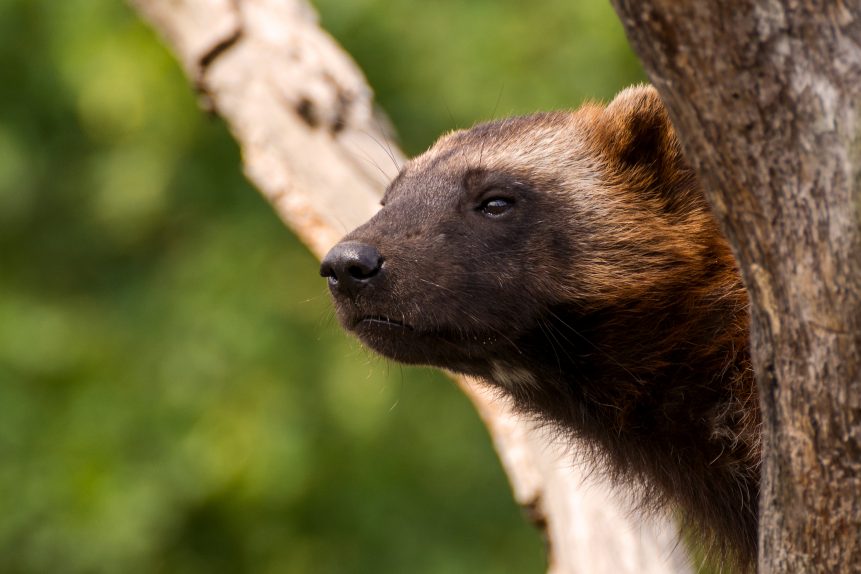
Last week, the Wallowa-Whitman National Forest shared remote camera photos of “Stormy,” a wolverine first documented in the NE Oregon forest for the better part of a decade. According to the post from the forest’s Facebook page, Stormy is “recognizable from his unique gular patch, a lighter-colored patch of fur on the throat and chest.”


Wolverines were believed to have been fully killed and gone from Oregon by 1935, but occasional sightings have been reported over the decades, and at least four have been trapped or found dead over the years. The Wallowa Mountains were long thought to have been good habitat for wolverines, but they weren’t officially confirmed until Researcher Audrey Magoun found the tracks in April of 2011. Photos and videos of two confirmed wolverines were proof of the elusive animals rambling around the Eagle Cap Wilderness.
A third wolverine was caught in a leghold trap meant for bobcats in 2012. The trapper contacted the Oregon Department of Fish and Wildlife (ODFW), who tranquilized and released the animal “unharmed.” However, despite urgings from Oregon Wild and other conservation groups at the time, ODFW continued to allow trapping - including lethal body-gripping traps - in the areas of known wolverine activity.
According to biologists with the U.S. Fish and Wildlife Service, there are fewer than 300 wolverines left in the contiguous United States. Oregon Wild has been pushing for Endangered Species protections for wolverines, including a particularly egregious decision on behalf of the Obama administration, who ignored the science and recommendations of their own biologists. Twice.
Wolverines prefer open forests and alpine areas and tend to avoid clearcut areas and the young, dense forests that grow up after that. In addition, wolverines require a habitat that provides cold, snowy conditions for much of the year because they rely on deep snow for denning as well as food storage. As a result, climate change is expected to substantially decrease the amount of potential wolverine habitat.

While it’s good to know that Stormy is still rambling around the Wallowa Mountains all these years later, his existence is likely a lonely one. Wolverine sightings are still rare, and there has been no public evidence that Stormy has been able to find a mate and raise young. Not only that, Stormy faces headwinds from powerful political forces both in Oregon and Washington DC, where the wellbeing of wildlife and their habitat is often traded in backroom deals that prioritize politics over science.
Here’s hoping Stormy can weather the rough road ahead.

